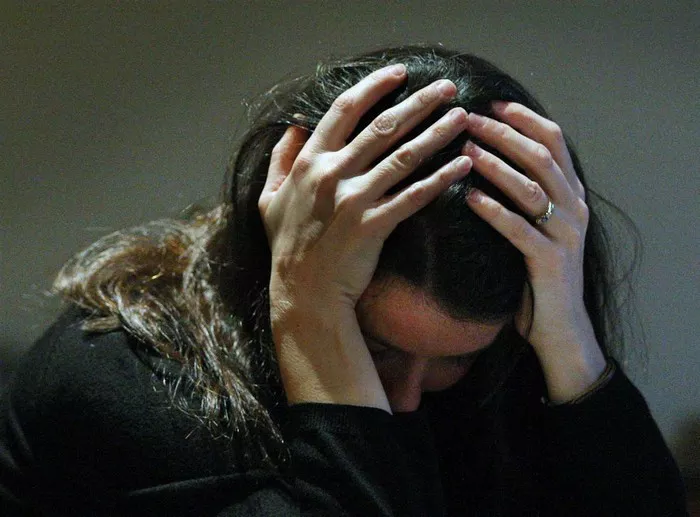In the realm of mental health, terminology and codes often serve as shorthand for complex concepts and conditions. One such code that has gained recognition within mental health circles is “52-50.” While it may seem cryptic to those outside the field, understanding its significance can provide valuable insights into the challenges faced by individuals living with mental illness and the resources available to support them. In this article, we’ll delve into the meaning of 52-50, explore its origins, and discuss its implications for mental health professionals, individuals experiencing mental health concerns, and society as a whole.
Unpacking 52-50: What Does it Mean?
At its core, 52-50 is a code used by mental health professionals to indicate an involuntary psychiatric hold or involuntary commitment. Specifically, it refers to Section 5150 of the California Welfare and Institutions Code, which allows for the temporary detention and evaluation of individuals who are deemed to be a danger to themselves or others due to a mental health crisis.
Under Section 5150, a qualified officer or clinician has the authority to place an individual on a 72-hour involuntary psychiatric hold if they meet certain criteria, including:
Danger to Self: The individual presents an imminent risk of harm to themselves, such as through self-harm or suicide attempts.
Danger to Others: The individual poses a threat of harm to others, such as through violent behavior or threats of violence.
Gravely Disabled: The individual is unable to provide for their own basic needs, such as food, shelter, or medical care, due to a mental health condition.
Once placed on a 5150 hold, the individual is typically transported to a psychiatric facility for evaluation and treatment by mental health professionals. The purpose of the hold is to provide immediate intervention and support during a mental health crisis, with the goal of stabilizing the individual and ensuring their safety and well-being.
Origins of 52-50: The California Welfare and Institutions Code
The term “52-50” derives from Section 5150 of the California Welfare and Institutions Code, which was enacted in 1967 as part of the Lanterman-Petris-Short (LPS) Act. The LPS Act aimed to reform the mental health system in California by shifting away from long-term institutionalization towards community-based treatment and support services.
Section 5150 specifically addresses the need for emergency intervention in cases where individuals are experiencing acute mental health crises that pose a risk to themselves or others. By authorizing involuntary psychiatric holds, the law seeks to balance the rights of individuals with mental illness with the need to protect public safety and provide timely access to mental health care.
Over the years, Section 5150 and the 52-50 code have become widely recognized within the mental health community and beyond as a means of addressing mental health emergencies and ensuring timely intervention for those in crisis.
Implications for Mental Health Professionals
For mental health professionals, understanding the significance of 52-50 is essential for recognizing when individuals may be in need of emergency psychiatric intervention. Clinicians, social workers, and law enforcement officers are often on the front lines of responding to mental health crises and play a crucial role in identifying and assisting individuals who may be at risk.
When determining whether to initiate a 5150 hold, mental health professionals must carefully assess the individual’s behavior, demeanor, and statements to determine whether they meet the criteria for involuntary commitment. This decision requires a delicate balance between respecting the individual’s rights and ensuring their safety and well-being.
Once a 5150 hold is initiated, mental health professionals are responsible for conducting a comprehensive evaluation of the individual’s mental health status, assessing their risk level, and developing a plan for appropriate treatment and follow-up care. This may involve collaboration with other healthcare providers, family members, and community resources to ensure continuity of care and support for the individual upon discharge from the psychiatric facility.
Impact on Individuals Experiencing Mental Health Concerns
For individuals experiencing mental health concerns, the prospect of being placed on a 5150 hold can be daunting and distressing. It may evoke feelings of fear, shame, and loss of control, particularly if they are unaware of the criteria for involuntary commitment or the purpose behind it.
However, it’s important to recognize that a 5150 hold is intended to provide individuals with immediate access to mental health care and support during times of crisis. By temporarily removing them from a potentially harmful situation and connecting them with appropriate resources, the hold offers an opportunity for stabilization, assessment, and treatment.
Following a 5150 hold, individuals have the right to participate in their treatment planning process, voice their concerns and preferences, and receive information about their rights and options for ongoing care. Mental health professionals are tasked with ensuring that individuals are treated with dignity, respect, and compassion throughout the evaluation and treatment process.
Societal Considerations and Advocacy Efforts
In addition to its implications for mental health professionals and individuals experiencing mental health concerns, 52-50 also has broader societal implications. It raises questions about the intersection of mental health, public safety, and civil liberties, and highlights the need for comprehensive mental health reform and access to community-based support services.
Advocates for mental health reform argue that involuntary psychiatric holds should be used judiciously and as a last resort, with a greater emphasis on preventative measures, early intervention, and community-based treatment options. They call for increased funding for mental health services, improved access to care, and enhanced training for law enforcement and healthcare professionals in recognizing and responding to mental health crises.
Furthermore, there is ongoing debate about the effectiveness of involuntary commitment laws in addressing the underlying causes of mental illness and reducing the risk of future crises. Some critics argue that involuntary psychiatric holds may perpetuate stigma, exacerbate trauma, and undermine individuals’ trust in the mental health system.
Conclusion: Navigating the Complexities of Mental Health Crisis Response
In conclusion, 52-50—derived from Section 5150 of the California Welfare and Institutions Code—serves as a critical tool for addressing mental health emergencies and providing timely intervention for individuals in crisis. While the prospect of involuntary psychiatric holds may evoke mixed feelings and raise ethical considerations, it’s essential to recognize their role in ensuring the safety and well-being of individuals experiencing acute mental health crises.
For mental health professionals, understanding the criteria for involuntary commitment and the procedures for initiating a 5150 hold is essential for effectively responding to mental health emergencies and connecting individuals with appropriate care and support. Likewise, individuals experiencing mental health concerns should be aware of their rights and options for treatment and advocacy.
As society grapples with the complexities of mental health crisis response, there is a growing recognition of the need for comprehensive reform and investment in community-based support services. By prioritizing early intervention, preventative measures, and trauma-informed care, we can work towards a more compassionate and equitable approach to supporting individuals living with mental illness and promoting mental health and well-being for all.
[inline_related_posts title=”You Might Be Interested In” title_align=”left” style=”list” number=”6″ align=”none” ids=”7078,7031,6970″ by=”categories” orderby=”rand” order=”DESC” hide_thumb=”no” thumb_right=”no” views=”no” date=”yes” grid_columns=”2″ post_type=”” tax=””]
































